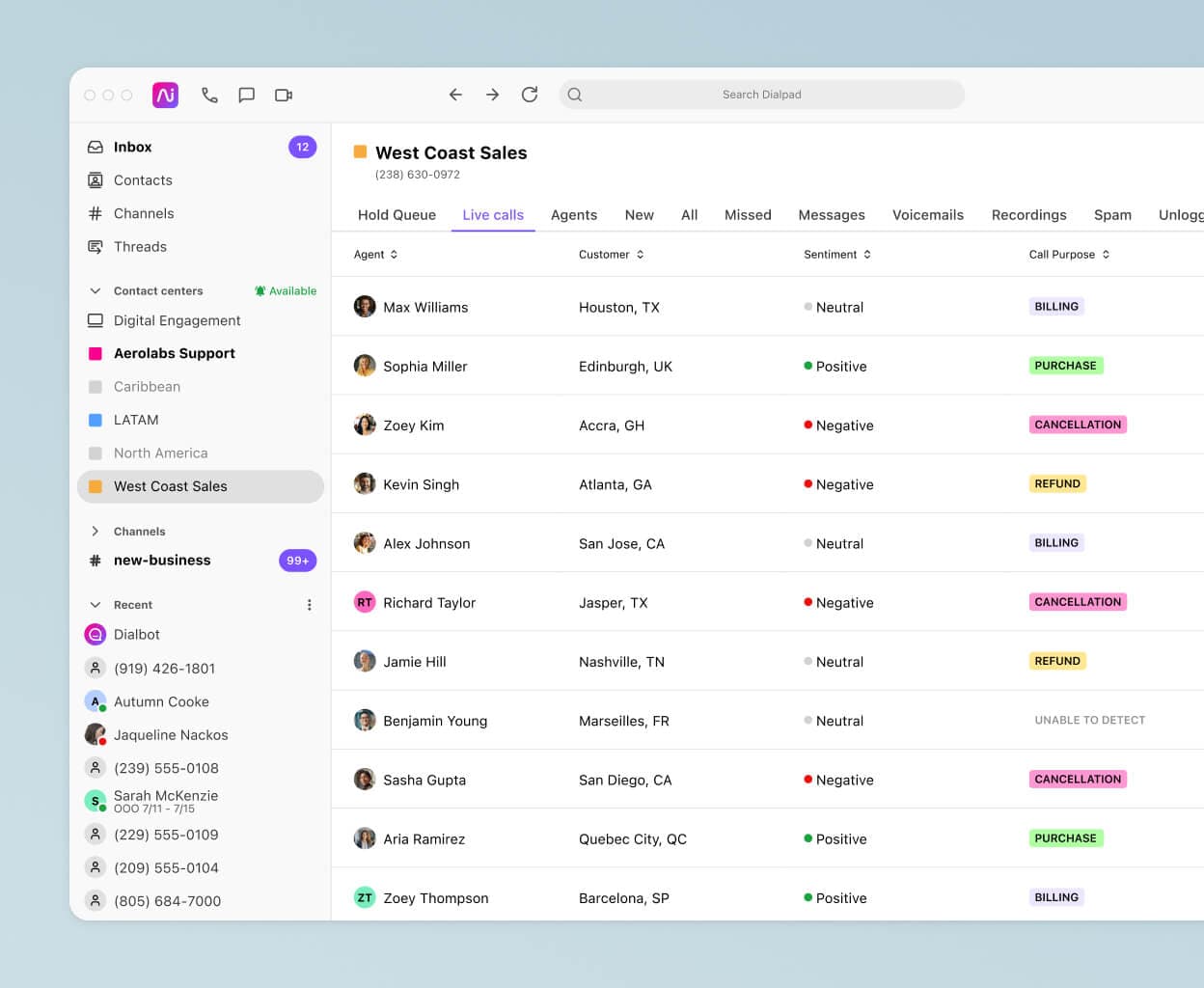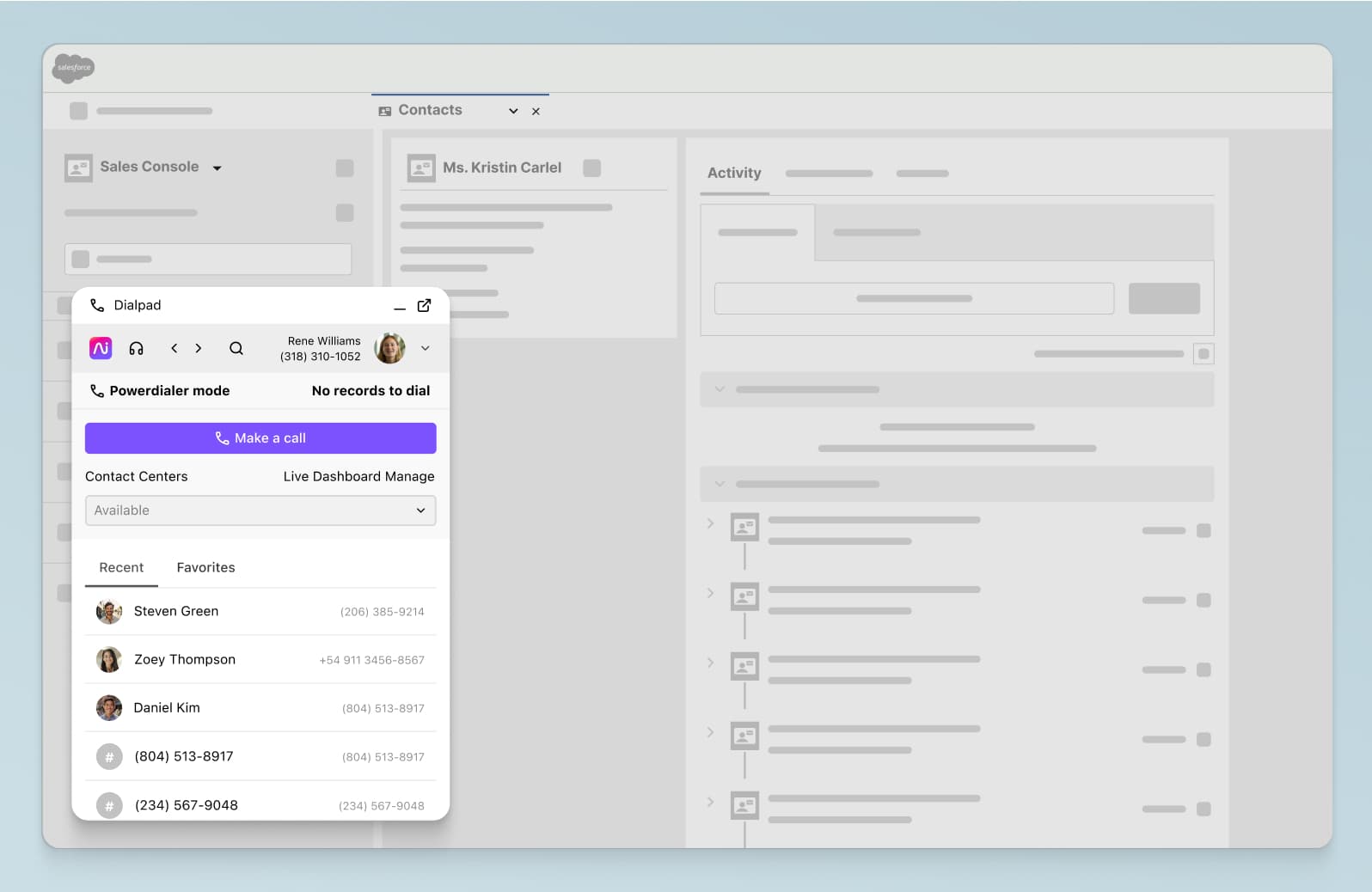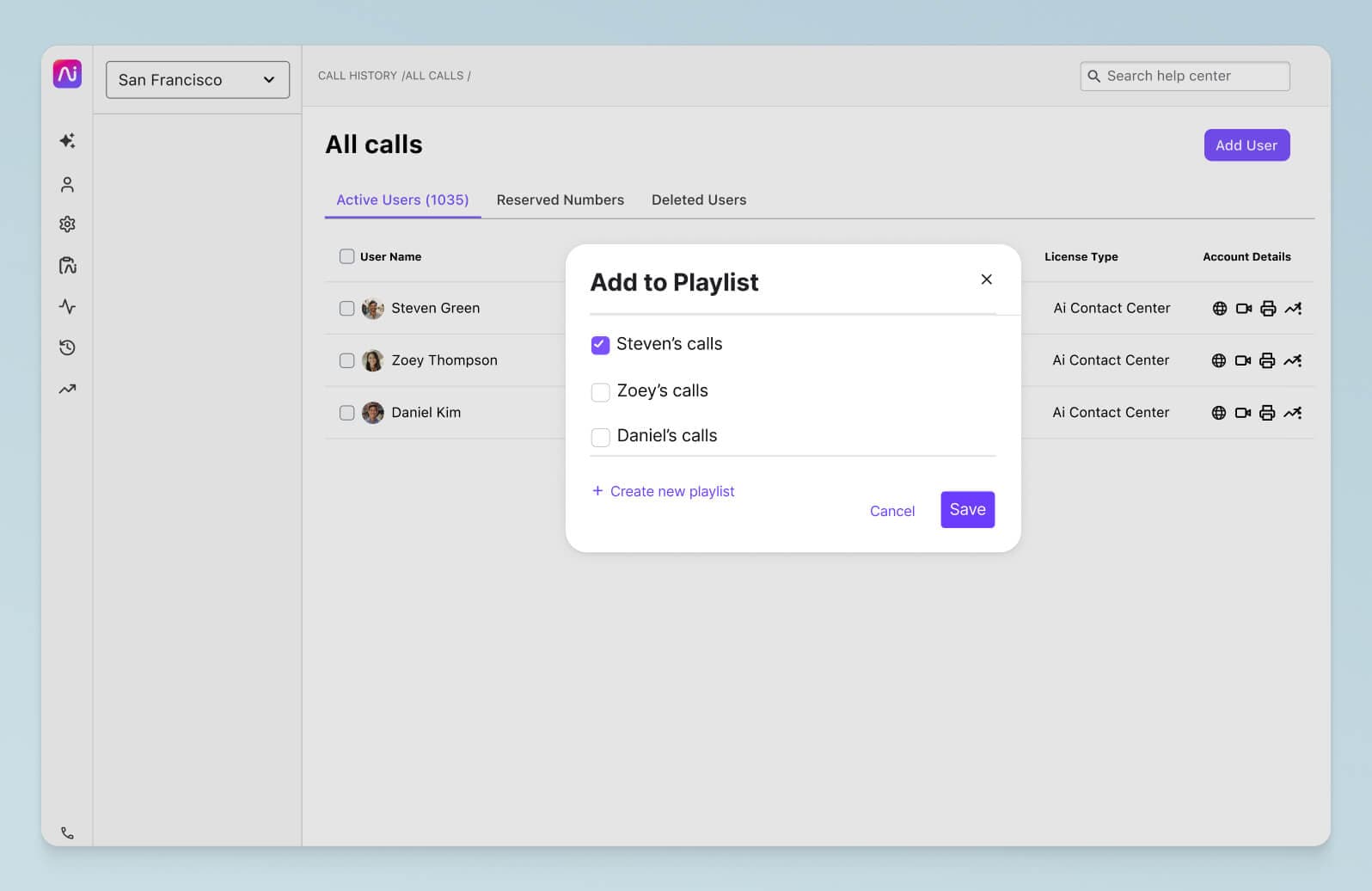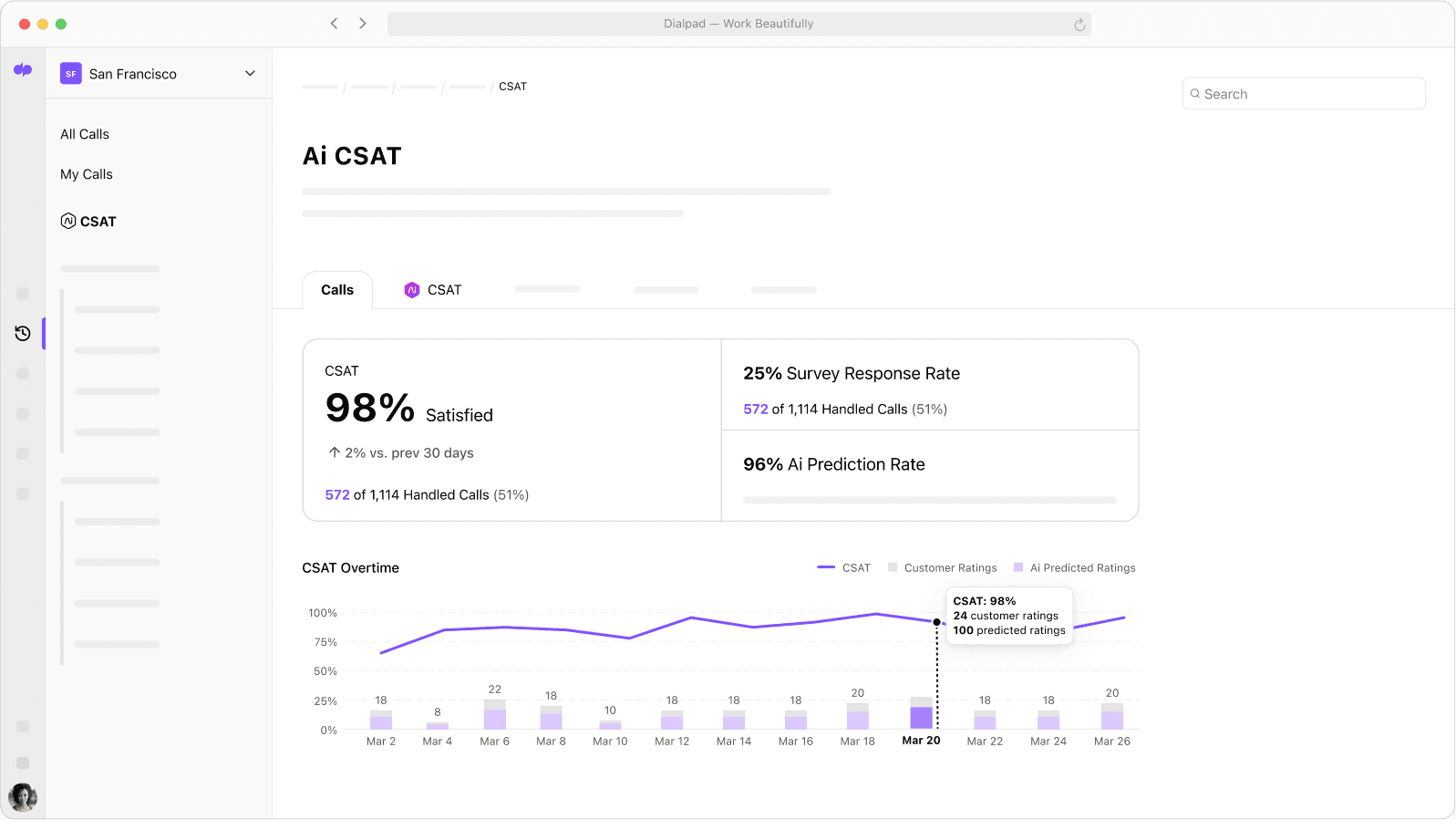After call work (ACW): What it means and how to improve yours

Customer Support Manager - Tier 1

Tags
Share
Yeah, interacting with customers is important, but you know what’s just as crucial? All the tasks an agent needs to do after the fact—also known as after call work (ACW).
ACW includes updating customer records, leaving detailed notes, completing action items, scheduling follow-up tasks, and notifying any colleagues that might need to be looped in. All these tasks help agents be more efficient, more productive, and provide better customer service.
But sometimes… ACW can feel like a real time-suck. That’s why, in this article, I cover ways to reduce the amount of after call work time in a contact centre (tried-and-tested by my own team), as well as the steps we take (using AI!) to complete our own ACW here at Dialpad.
(If you’re a contact centre vet, you can skip ahead to those parts if you want. For those new to the space, I’ll first introduce what after call work is and its importance in more detail.)
What is ACW?
After call work, or ACW, refers to the time an agent spends after a call completing necessary tasks related to the call. These tasks can include documenting the call, updating the customer's record in the customer relationship management (CRM) system, assigning follow-up tasks to themselves or other agents, and analyzing customer feedback.
Why is ACW important?
ACW is absolutely essential. For a number of reasons, including:
ACW lets agents document all relevant information about the call, which is crucial for your organization's knowledge management.
ACW makes sure that agents have covered all necessary tasks related to the call, like scheduling follow-up items or updating the CRM.
Having a detailed record of your past customer interactions (thanks to ACW) also allows your agents to provide a more seamless experience for repeat customers, since they’ll be able to easily pick up where they left off.
ACW allows agents and supervisors to analyze customer feedback and identify areas for improvement in their service.
While the duration of ACW can vary based on the complexity of the call and your company’s internal policies, a shorter ACW time means a shorter Average Handle Time (AHT).
What are the steps to completing ACW?
Here are the steps my team here at Dialpad follows to complete our ACW (and how they do it):
Step 1: Logging call notes and summarizing
The first step in completing ACW is to log call notes and summarize the call. Agents should record key details including the customer's name, account number, the issue they called about, and any actions items that came out of the call.
Luckily, Dialpad Ai does pretty much all of this work for us! The real-time transcription eliminates the need for our agents to take notes, since a searchable transcript—along with action items—will automatically be made available after each call (it also gives agents helpful tips during the call, like telling them to slow down if speaking too fast):

Of course, while it’s nice to know the transcript is available, usually just a summary is fine. The Ai-powered call summary feature automatically does that for us instantly:

Dialpad even analyzes the sentiment of each call. As a Support Manager, this is hugely helpful to me because I’m able to view how all the live calls are going at a glance, and I can proactively jump in when an agent needs help. On the flip side, this also makes things easier for agents, who don't have to worry about manually messaging me or another supervisor for help because they know that the call sentiment will be visible already:

Step 2: Executing required actions
The second step is to execute any required actions related to the call. For example, if the customer requested a follow-up call or email, the agent should schedule that task and assign it to themselves or another agent if necessary. This step ensures that all necessary actions are taken, nothing falls in between the cracks, and the customer's issue is resolved effectively.
I mentioned that Dialpad Ai automatically captures action items for us. Well the Dialpad-Salesforce integration also allows us to automatically sync these up with our CRM and assign them to the appropriate agents, as well as track their completion:

And the Google Calendar integration lets us schedule follow-ups, manage meeting invites, and start or join Dialpad Ai Meetings in just a few clicks:

Step 3: Analyzing customer feedback + coaching
The final step is to analyze customer feedback. Agents should review the call and identify areas for improvement in their service. This step is essential because it helps agents improve their skills and provide better service to customers in the future.
Dialpad Ai's live coaching features are instrumental for us. It allows me to create coaching call recording playlists and provide support to agents when they need it—which is especially helpful for new hires:

Even the most ramped-up agents need a bit of help now and then. Dialpad Ai provides every agent with real-time assistance, automatically popping-up the talking points they need to answer tricky questions—triggered by specific keywords and phrases within the conversation—at the exact moment they need it:

And at the end of each call, Dialpad’s Ai CSAT feature accurately infers CSAT scores for customer interactions—without needing to rely on customers filling out survey responses. This lets us see how our customers really feel about us, and alerts us to any fluctuations:

Benefits of tracking ACW for contact centres
Tracking ACW has several big benefits for contact centres. Firstly, it allows managers to identify areas for improvement in their agents' performance. By analyzing the time agents spend on ACW, for example, I can identify which agents need additional training or support.
Tracking ACW can also help managers identify any bottlenecks in their processes and make adjustments to improve efficiency. For example, if agents are having to spend a lot of time logging information into multiple systems, it may be worth looking into ways to consolidate some of your tech.
Another benefit of tracking ACW is that it can help managers optimize their staffing levels. By analyzing the average ACW time for each agent, managers can determine the optimal number of agents required to handle a given volume of calls. This can help managers avoid overstaffing or understaffing, which can impact both customer satisfaction and cost.
Finally, tracking ACW can help managers identify trends in customer issues and adjust their processes accordingly. By analyzing call notes and customer feedback, managers can identify common issues and make changes to their training, scripts, or processes to address these issues proactively.
How can you reduce after call work time in a contact centre?
Reducing ACW time in a contact centre can improve efficiency and productivity while also improving the customer experience. Here are some strategies that organizations can use to reduce ACW time:
Automate processes
Organizations can use automation to streamline the ACW process. For example, they can automate call notes logging or schedule follow-up tasks using CRM tools. And of course, there’s the Dialpad Ai examples I provided above. This can save agents time and improve accuracy.
Provide training
Learning how to complete ACW efficiently should be part of new agent onboarding. For example, organizations can provide tips on effective note-taking or time management techniques to help agents complete ACW tasks more quickly.
Use call scripts
Provide your agents with call scripts that include prompts for necessary ACW tasks. This can help agents remember to complete all required tasks and reduce the time required to complete ACW.
Optimize tools and systems
This can also help reduce the time required to complete ACW tasks. For example, you should make sure your CRM is configured in a way that agents can quickly access relevant information. If your CRM isn’t connected with the other tools your team uses, find out if an integration exists to streamline your systems. This information is usually available on the vendor’s website (or if you have an IT team, they can help).
Monitor and adjust processes
Managers should monitor their ACW processes regularly and make adjustments as needed.
Dialpad makes after-call work a breeze
Reduce your ACW time by letting Dialpad do most of it for you. Book a demo to see how, or take a self-guided interactive tour of the app first!








